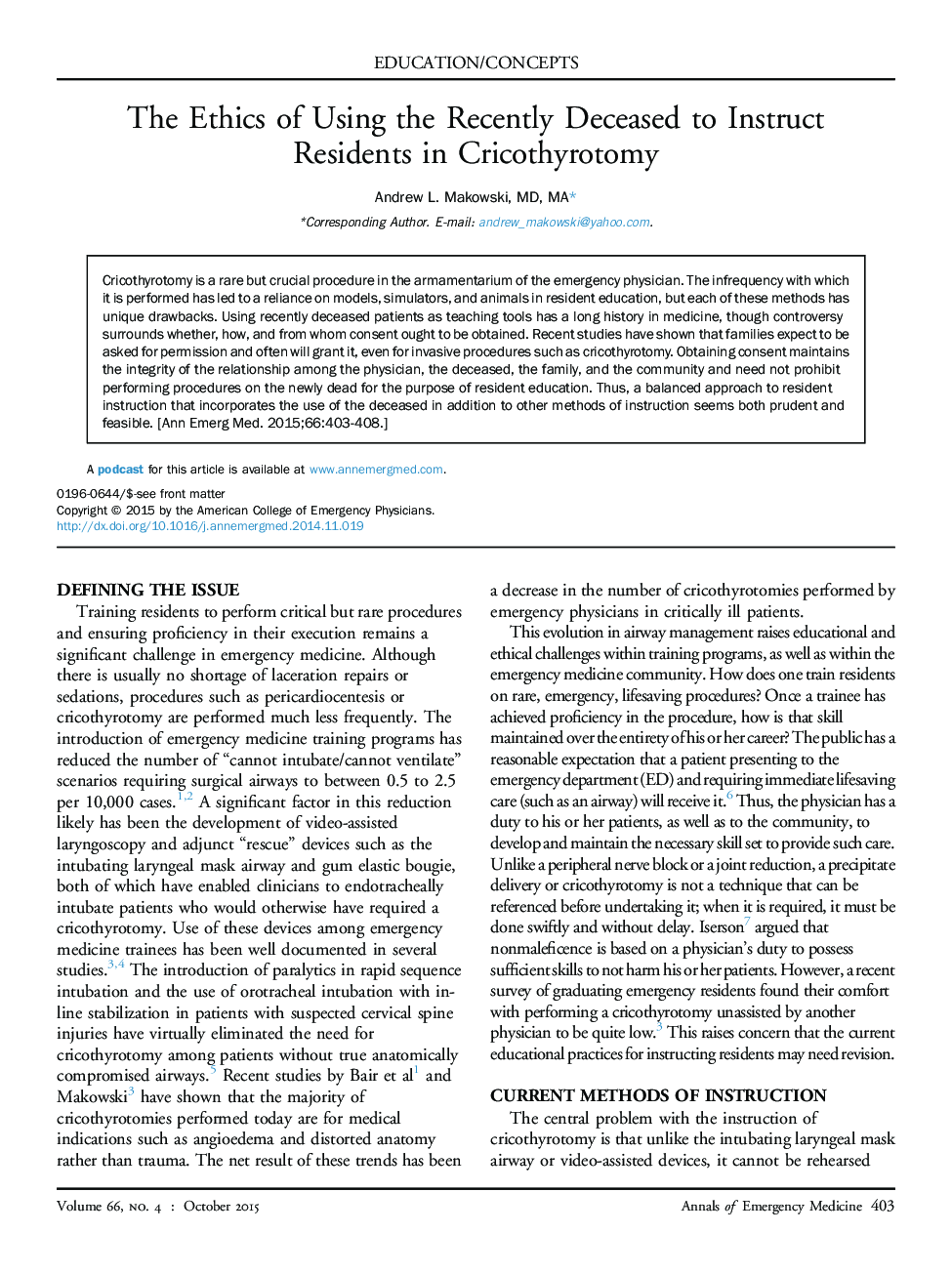| Article ID | Journal | Published Year | Pages | File Type |
|---|---|---|---|---|
| 3228621 | Annals of Emergency Medicine | 2015 | 6 Pages |
Cricothyrotomy is a rare but crucial procedure in the armamentarium of the emergency physician. The infrequency with which it is performed has led to a reliance on models, simulators, and animals in resident education, but each of these methods has unique drawbacks. Using recently deceased patients as teaching tools has a long history in medicine, though controversy surrounds whether, how, and from whom consent ought to be obtained. Recent studies have shown that families expect to be asked for permission and often will grant it, even for invasive procedures such as cricothyrotomy. Obtaining consent maintains the integrity of the relationship among the physician, the deceased, the family, and the community and need not prohibit performing procedures on the newly dead for the purpose of resident education. Thus, a balanced approach to resident instruction that incorporates the use of the deceased in addition to other methods of instruction seems both prudent and feasible.
